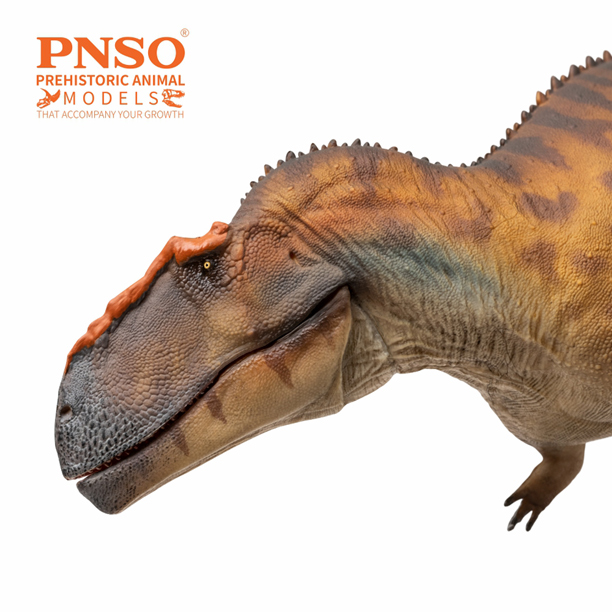Thank you to the Cleveland Museum of Natural History. They kindly provided Everything Dinosaur team members access to a remarkable and rare set of historic photographs. Researchers from the Cleveland Museum of Natural History have been involved in a new study that reaffirms the validity of the Nanotyrannus genus. These black and white photographs document the original Nanotyrannus quarry.
Having enquired about a media release that covers this new research, Everything Dinosaur was given access to these rare images. The photographs provide a visual record of the 1942 fieldwork in Montana led by Dr David Dunkle. This fieldwork exploring Upper Cretaceous exposures led to the discovery of tyrannosaur skull material that ignited the Nanotyrannus versus juvenile T. rex debate.

One of the photographs of the original Nanotyrannus dig site. Picture credit: Cleveland Museum of Natural History.
Picture credit: Cleveland Museum of Natural History
The Original Nanotyrannus Quarry
The photographs provide a rare glimpse into fossil-hunting in the 1940s. The story of Nanotyrannus (N. lancensis), begins in the summer of 1942. Dr Dunkle (Cleveland Museum of Natural History) led a fossil-hunting expedition to plot and explore what are now known to represent Hell Creek Formation exposures. The team discovered several important fossils, none more so than the tyrannosaur skull fossil material.

Dr David Dunkle of the Cleveland Museum of Natural History who led the 1942 fieldwork exploring Hell Creek exposures in Montana that led to the discovery of the Nanotyrannus skull material known as the “Cleveland skull”. Picture credit: Cleveland Museum of Natural History.
Picture credit: Cleveland Museum of Natural History
The team unearthed the skull of a theropod dinosaur. No other significant theropod bones were found at the site. Although the skull resembled that of a juvenile Tyrannosaurus rex, its true identity remained uncertain. Dr Dunkle recognised the importance of the find. In 1945, the specimen was sent to the Smithsonian Institution. There, palaeontologist Charles Whitney Gilmore assigned it to a new species of Gorgosaurus (G. lancensis).
The Skull Fossil Revisited
Decades later, the skull was re-examined. In 1988, a research team that included Cleveland Museum of Natural History curator Dr Michael Williams proposed a bold reinterpretation. They argued the fossil represented a new genus. They named it Nanotyrannus lancensis, meaning “tiny tyrant from the Lance Formation”.

Comparing the size of a Nanotyrannus skull to that of an adult Tyrannosaurus rex. Dr Williams is holding the Nanotyrannus skull. He and his team believed the “Cleveland skull” represented a new theropod species. Picture credit: Cleveland Museum of Natural History.
Picture credit: Cleveland Museum of Natural History
A scientific paper published earlier this month, reaffirmed the validity of the Nanotyrannus taxon. Histology of the hyoid bone associated with the “Cleveland skull” indicates that this skull represents a skeletally mature animal and not a juvenile Tyrannosaurus rex.
To read Everything Dinosaur’s recent blog post about the Nanotyrannus hyoid bone research: New Nanotyrannus Scientific Paper Strengthens Unique Taxon Theory.
This proposal reignited scientific debate. Over time, many researchers suggested the specimen was a juvenile T. rex. Others disagreed. As discussed in our earlier blog post, recent research has once again shifted opinion. Indeed, a paper published earlier this year also indicates that Nanotyrannus is a valid taxon.
To read our blog post about this research: Nanotyrannus – A New Chapter in Tyrannosaur Evolution.
Documenting a Pivotal Moment in the Study of Hell Creek Biota
The old photographs that Everything Dinosaur team members were able to access document the story of the Nanotyrannus discovery. They provide a unique record of the fieldwork and subsequent research. The remote dig site in the Badlands of Montana would have been extremely difficult to access. Furthermore, the image (below) highlights the difficulties of the terrain.

From the archives of the Cleveland Museum of Natural History, an original photograph of the 1942 dig site. Picture credit: Cleveland Museum of Natural History.
Picture credit: Cleveland Museum of Natural History
Mike from Everything Dinosaur thanked the media team and added:
“We would like to sincerely thank the Cleveland Museum of Natural History for sharing these exceptional photographs. They capture a pivotal moment in palaeontological history and bring the 1942 expedition to life. These images remind us that the Nanotyrannus story began in the field, long before the scientific debate, and they underline the lasting importance of museum collections and careful documentation.”
Thanks to museum collections and fresh thinking, the Nanotyrannus story continues to evolve.
Everything Dinosaur acknowledges the assistance of a media release from the Cleveland Museum of Natural History in the compilation of this article.
The multi-award-winning Everything Dinosaur website: Dinosaur Models and Toys.



















